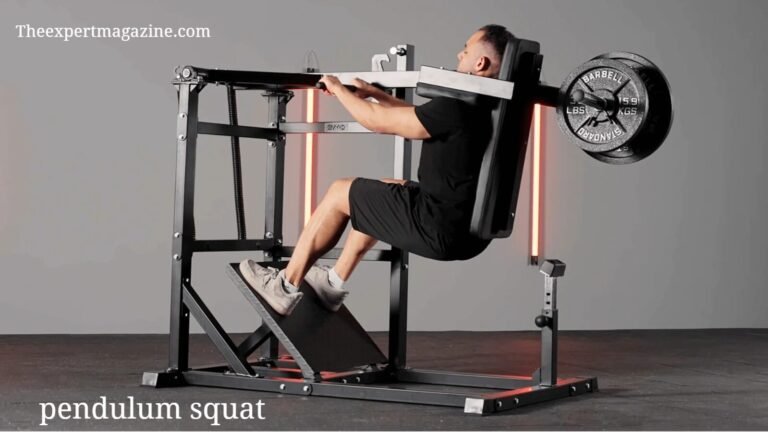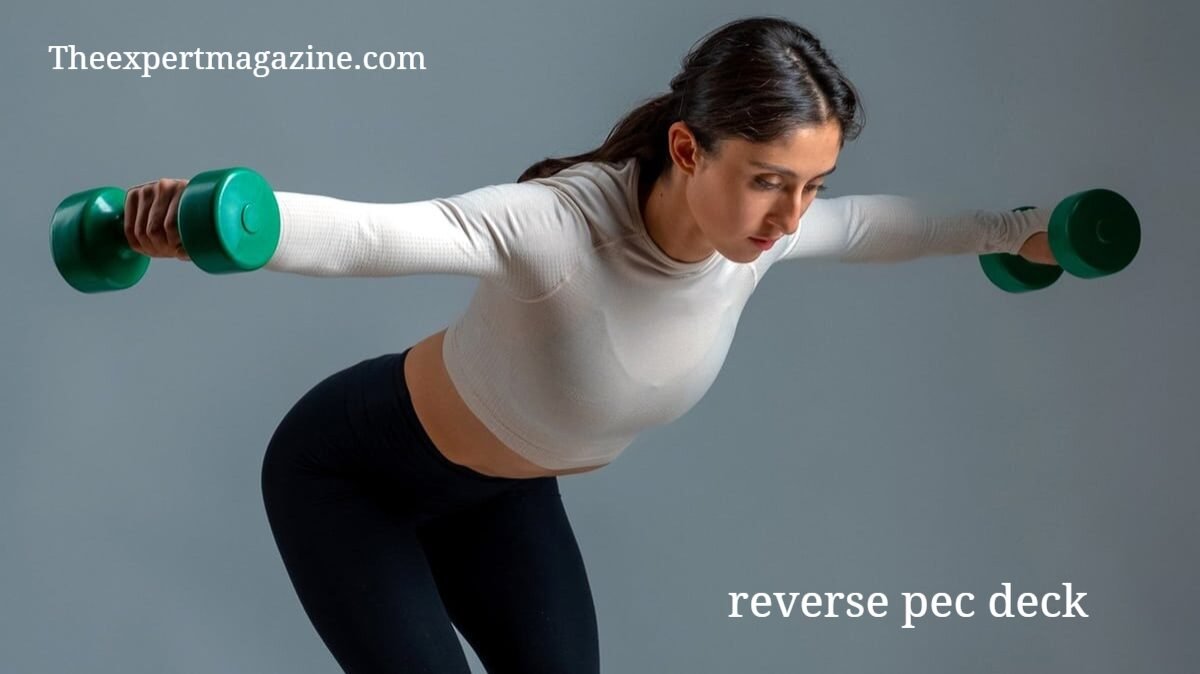
reverse pec deck
Introduction
The reverse pec deck mechanism is one of the most efficient tools for structure a burly and impartial upper body. Often unnoticed in favor of counter press or push-focused movements, the overturn pec deck specially targets the rear deltoids, rhomboids, and trap. These muscle are critical for bearing, shoulder loyalty, and overall athletic recital. Whether you are a beginner trying to fix force inequity or an educated lifter aim to exploit shoulder force, this machine provide controlled society and reduce injury risk.
In this article, we will break down everything about the overturn pec deck — from payback and proper form to variation, mistakes, and exercises plans. By the end, you’ll know accurately how to use it carefully and effectively for finest results.
Table of Contents
Sympathetic the Reverse Pec Deck
What is the Reverse Pec Deck?
The reverse pec is a gym machine exercise designed to strengthen the posterior shoulder muscles and upper back. Unlike the traditional pec deck that works the chest, the reverse version flips the motion. Instead of urgent your arms secret, you pull them rearward in a overturn fly society.
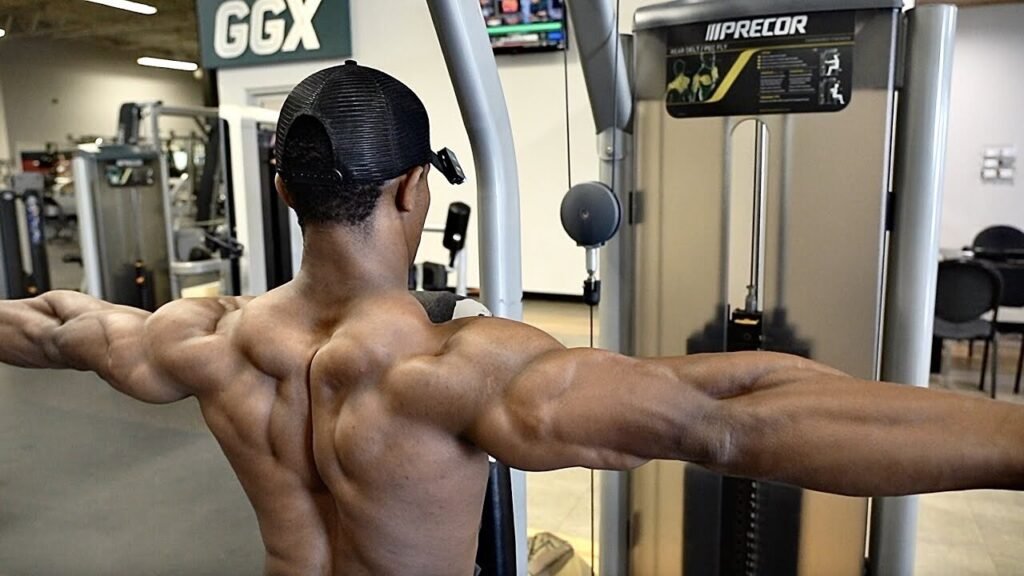
This simple modification shifts the focus from nearly muscles (chest) to pull muscle (rear delts and back). It’s a safe, guide culture because the mechanism stabilize your body, allowing you to focus on muscle breach rather than poise.
Muscle work in the Reverse Pec Deck
The primary goal of the reverse pec deck is to build rear shoulder and back strength. Below is a breakdown:
| Muscle Group | Role in Exercise |
| stern Deltoids | chief movers, accountable for pull arms back |
| Rhomboids | steady carry blades and advance stance |
| Trapezius (higher & center) | Support scapular retraction |
| Infraspinatus (rotator slap) | Provides shoulder joint stability |
| Teres small | Assists in external rotation of shoulders |
This mixture of muscles ensures that your upper body develops symmetrically, preventing injuries caused by overdeveloped chest and front delts
Benefits of the Reverse Pec Deck
1. Posture Improvement
Modern lifestyle involve hours of session, typing, or using phone. This often cause round shoulders and a curved back. The pec deck strengthen the muscle answerable for pull shoulders back, civilizing bearing and position.
2. carry strength
Strong rear delts and rotator cuff muscle defend the shoulders during urgent actions like the bench push. normal use of the overturn pec deck reduce the risk of rotator cuff injury.
3. impartial build
Most gym-goers train torso more than back, foremost to imbalance. Adding overturn pec deck balance your upper body aesthetics, creation shoulders look broader and more distinct.
4. Beginner-Friendly train
Unlike free-weight rear delt flys, which need poise and organization, the mechanism offers forbidden group, making it ideal for cut down.
5. sporty presentation
Sports such as swim baseball, and boxing rely on shoulder constancy. teaching with the overturn pec deck improve pull force and sporty recital.
How to execute the Reverse Pec Deck properly
slowly direct
- regulate the Seat – Sit with your chest firmly alongside the pad, ensure your shoulders are allied with the machine’s handle.
- Grip the handle – Hold the handle or the provide bars with a unbiased grip (palms opposite inner).
- Set Your carriage – remain your chest beside the pad, spine neutral, and feet flat on the argument.
- execute the society – leisurely pull the handle rearward in a wide arc until your guns are extensive after you.
- Control the revisit – carry the handles onward with control, not hire the weights slam down.
Common mistake to shun
use Too Much heaviness
exciting too serious often leads to vacillation and poor form. This shift the load away from the goal muscle and increase wound risk.
Shrugging shoulder
attractive traps instead of rear delts reduce efficacy. forever keep shoulders tranquil and focus on moving during the delts.
Limited choice of action
Not pull fully rearward limits force start. Aim for a full but proscribed range. openness onward
openness breaks stance and reduce tension on the rear delts. Keep your chest pushed against the filling.
Reverse Pec Deck vs back Delt Fly (gratis Weights)
| Feature | Reverse Pec Deck | Rear Delt Fly (Dumbbells) |
| Stability | High (machine support) | Low (requires balance) |
| Beginner-Friendly | Very easy | Moderate |
| Range of Motion | Fixed | Flexible |
| Injury Risk | Low | Higher if form breaks |
| Muscle Activation | Isolated rear delts & traps | Similar, but requires more coordination |
Both movements are brilliant, but the reverse deck is greater for basic and those improving from damage.
Tips for maximize fallout
- tepid Up First – execute light band pull-aparts or active stretch before use the mechanism.
- Mind-Muscle correlation – Focus on emotion the rear delts bond instead of just touching the heaviness.
- forbidden cadence – Use a 2:1 ratio (two second pulling, one next chronic).
- Progressive surplus – steadily augment heaviness or reps over weeks to guarantee nonstop growth.
- comprise in impartial custom – brace with chest, carry, and back aerobics for balance.
Superior conduct to Reverse Pec Deck
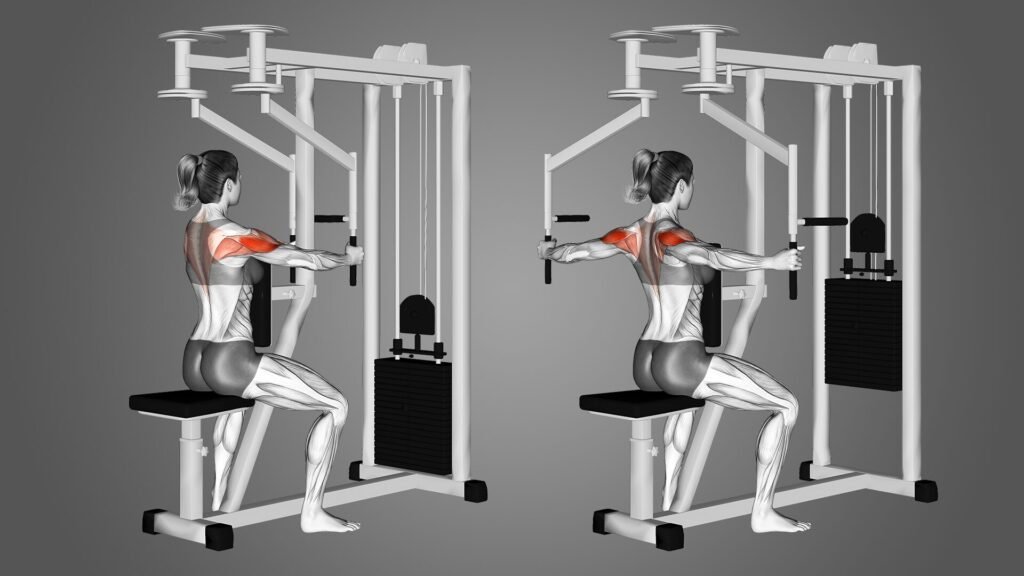
Variations of the Reverse Pec Deck
though the pec deck mechanism itself is simple, you can adapt grips, angle, and argument to challenge your muscle in unlike ways.
1. unbiased Grip difference
- Palms opposite secret.
- focus more on rear delts and mid trap.
- reduce shoulder strain, creation it apposite for basic.
2. Overhand Grip disparity
- Palms facing downward.
- Increases trapezius activation.
- Best for lifters who want to target upper back thickness.
3. Partial Range of Motion
- Perform the movement in the mid-range only.
- Keeps steady tension on the rear delts.
- helpful for force patience and hypertrophy.
4. cadence teaching
- Slow strange (return stage) for 3–4 second.
- maximize time under worry and increase.
Reverse Pec Deck for diverse strength level
basic
- middle on light heaviness and accurate form.
- execute 2–3 set of 12–15 rep.
- Prioritize constancy over strength.
middle Lifters
- augment heaviness slowly.
- Add variation like cadence teaching.
- execute 3–4 set of 10–12 rep.
higher Lifters
- Use strength technique like drop set or supersets.
- coach with heavier loads but preserve stern form.
- execute 4–5 set of 8–10 rep.
Reverse Pec Workout Programming
A well-structured program ensures you build strength while avoiding overtraining. Here’s how to integrate the reverse pec deck into your workout routine:
1. As Part of Push/Pull/Legs Split
- Pull Day → Include reverse pec deck with rows, pull-ups, and face pulls.
- Example:
- Pull-Ups: 4×8
- Barbell Rows: 4×10
- Reverse Pec Deck: 3×12–15
- Bicep Curls: 3×12
2. As Accessory in Push Day
Even though it’s a pulling movement, adding reverse pec deck on push days ensures rear delts balance out heavy pressing.
- Bench Press: 4×8
- Overhead Press: 4×8
- Reverse Pec Deck: 3×15
- Lateral Raises: 3×12
3. Upper/Lower Split
On trunk days, the overturn pec deck fits perfectly with complex lifts.
- dispose worktable push: 4×8
- Pull-Ups: 4×8
- overturn Pec Deck: 3×12
- Dumbbell row: 4×10
Reverse Pec Deck for stance and treatment
The overturn pec deck isn’t just for bodybuilding—it’s therapeutic when used correctly.
- bearing alteration: By increase the rhomboids and rear delts, it helps battle forward-rolled shoulders caused by long hours at a desk.
- therapy: bodily therapist often stipulate light fight reverse pec for patients improving from rotator cuff injury.
- Spinal fitness: Stronger upper back muscle reduce strain on the cervical spine, prevent neck ache.
Reverse Pec Deck in Bodybuilding
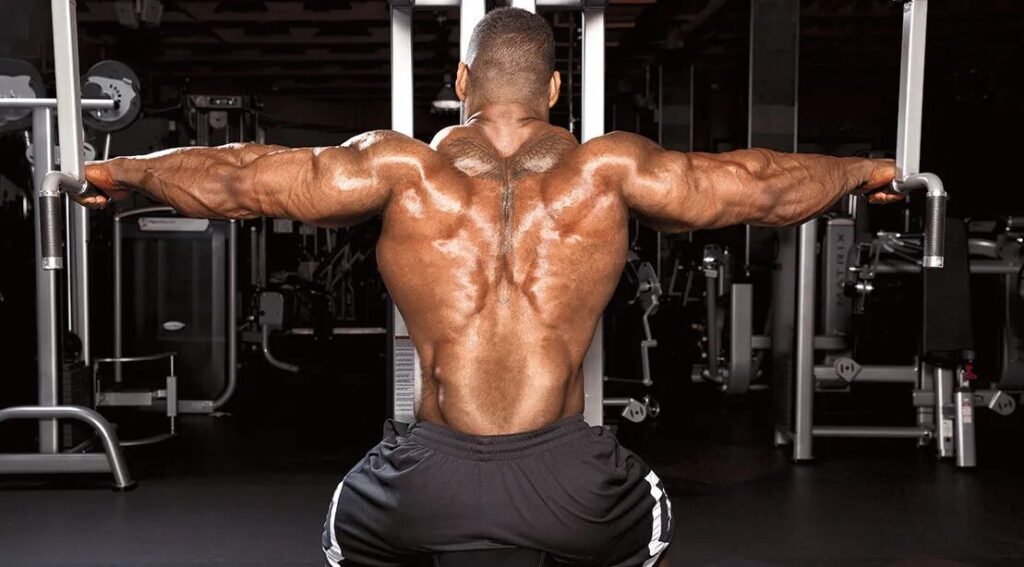
For bodybuilders, rear delts are often a weak point because they’re not as visible as chest or biceps. Judges, however, value a balanced physique where the shoulders appear 3D and round.
- The reverse pec deck isolates the rear delts, giving shoulders that “capped” look.
- It improves back double biceps poses, where rear delts make the upper body look wider.
- coupling it with lateral raises and slide presses creates whole deltoid growth.
Security and defense
While the annul pec deck is safe, abuse can cause injury. Follow these plan:
Warm Up First
- Use resistance bands or light weights to activate the shoulder muscles.
Don’t Overload
- use too greatly heaviness puts pressure on the rotator cuff, leading to strain.
Control Each Rep
- Avoid jerky or explosive movements. Smooth motion ensures muscle engagement.
Align Properly
- forever regulate the seat and handle tallness so your shoulders are in line with the machine’s axis.
inhalation system
- Exhale while pull back, inhale while recurring onward.
Reverse Pec Deck vs Other Rear Delt Exercises
| Exercise | Equipment | Pros | Cons |
| Reverse Pec Deck | Machine | Stable, beginner-friendly, isolates rear delts | Limited motion path |
| Rear Delt Dumbbell Fly | Dumbbells | Free range of motion, versatile | Harder to maintain form |
| Face Pulls | Cable | Excellent for posture, dynamic | Requires technique mastery |
| Bent-Over Lateral Raise | Dumbbells | Engages stabilizers too | Risk of lower back strain |
➡ Best strategy: Combine reverse pec deck + free-weight flys + face pulls for complete development.
Reverse Pec Deck for Athletes
athlete benefit from the overturn pec deck since it enhance:
- carry constancy: necessary for throwing athlete (baseball, lance).
- pull force: Swimmers and rowers gain patience.
- punch Power: Boxers and MMA battalion need burly rear delts for defense and counter-punching.
- Injury Prevention: Balances heavy pushing movements used in training.
Sample 4-Week Reverse Pec Deck Plan
| Week | Sets & Reps | Notes |
| 1 | 2×15 (light weight) | Focus on form |
| 2 | 3×12 (moderate weight) | Add controlled tempo |
| 3 | 4×10 (increase load) | Push progressive overload |
| 4 | 3×15 (drop sets) | Maximize hypertrophy |
This cycle allows both strength gains and muscle growth without overtraining.
Expert Insights and Final Guide on Reverse Pec Deck

Common Myths About the Reverse Pec Deck
Myth 1: “It’s Only for Beginners”
Many assume machines are just for newcomers. In reality, even professional bodybuilders and athletes use the reverse pec deck to isolate rear delts safely and effectively.
Myth 2: “It Doesn’t Build Muscle Like Free Weights”
While free weights activate stabilizers, studies show the reverse pec deck provides equal or better isolation for rear delts because of its fixed path.
Myth 3: “You Don’t Need to Train Rear Delts Separately”
Most people think rows and pull-ups are enough. However, the rear delts often remain underdeveloped unless targeted directly.
Myth 4: “More heaviness = Better fallout”
Heavy exciting with poor form can hurt the shoulder. influence growth relies on forbidden motion, not utmost load.
Expert Tips for utmost fallout
- Prioritize shape Over heaviness
- Rear delts are smaller muscles; lighter weight with strict form is more effective.
- Rear delts are smaller muscles; lighter weight with strict form is more effective.
- Use Reverse Pec Deck Early in Workouts
- Doing it fresh ensure better mind-muscle relation, instead of rushing at the end.
- Doing it fresh ensure better mind-muscle relation, instead of rushing at the end.
- Pair with balancing aerobics
- unite with face pull or lateral raises for total shoulder poise.
- unite with face pull or lateral raises for total shoulder poise.
- Apply Progressive surplus
- Increase resistance or reps gradually every 2–3 weeks to force adaptation.
- Increase resistance or reps gradually every 2–3 weeks to force adaptation.
- Train Rear Delts Twice a Week
- Rear delts recover faster than larger muscles, so higher frequency can boost growth.
Reverse Pec Deck for Longevity and Everyday Life
Strong rear delts aren’t just for aesthetics. They play a role in daily movement efficiency:
- transport bags lacking shoulder damage.
- maintain upright stance while working at a counter.
- prevent age-related slouch.
- caring shoulders from injury during leisure sports.
This makes the annul pec deck an train with practical profit away from the gym.
Incorprate Reverse Pec Deck into Full-Body strength

A impartial custom should combine nearly, pulling, and stabilize aerobics. Here’s how the reverse pec deck fits into a holistic daily plan:
instance 3-Day Split
- Day 1 – Push: Bench press, slide press, side raise.
- Day 2 – Pull: Deadlifts, barbell rows, overturn pec deck, face pull.
- Day 3 – Legs: Squats, lunge, constrain curls, calf raise.
instance 4-Day higher/inferior Split
- Day 1 – Upper Push: Chest press, dips, lateral raise.
- Day 2 – Lower Body: squat, RDLs, leg push.
- Day 3 – higher Pull: Pull-ups, rows, overturn pec deck, biceps locks.
- Day 4 – inferior Body + Core: Deadlifts, hip thrust, planks.
This ensure all strength are taught evenly, dipping risk of inequity.
E.E.A.T values practical
· knowledge: trainer and physiotherapists advocate the annul pec deck for both strength enthusiast and rehab patients.
· knowledge: Sports discipline confirm rear delt separation improves presentation and bearing.
· reliability: Bodybuilding myths like Arnold Schwarzenegger emphasize rear delt teaching for impartial physique.
· honesty: Using forbidden, safe mechanism actions minimize injury risk, manufacture it a reliable exercise.
Conclusion
The reverse pec deck is more than just a engine—it’s a influential tool for carry health, stance improvement, and impartial force growth. Whether you’re a learner education proper form, an contestant boost performance, or a bodybuilder chase balance, this mechanism deserve a lasting spot in your teaching custom.
By focus on form, constancy, and progressive surplus, the overturn pec deck will help you expand strong, definite, and injury-resistant shoulder for years to come.
FAQs About Reverse Pec Deck
1. Is the pec deck better than dumbbell rear delt flys?
Both are effective. The reverse pec deck provide more constancy and is safer for basic, while dumbbell flys allow greater autonomy of group. Ideally, unite both.
2. How often should I train on the reverse pec deck?
For best results, train rear delts 2 times per week with 3–4 sets per session.
3. Can the overturn pec deck help with bearing?
Yes. It strengthen the rear delts and rhomboids, which pull the shoulders back and accurate round stance.
4. Is it safe for populace with shoulder injury?
Yes, if used with light heaviness and proper position. forever ask a physiotherapist if you’re improving from wound.
5. What’s the best rep range for the reverse pec deck?
· For force increase (hypertrophy) → 10–15 reps.
· For force → 6–8 reps with forbidden heaviness.
· For patience/stance → 15–20 reps.


